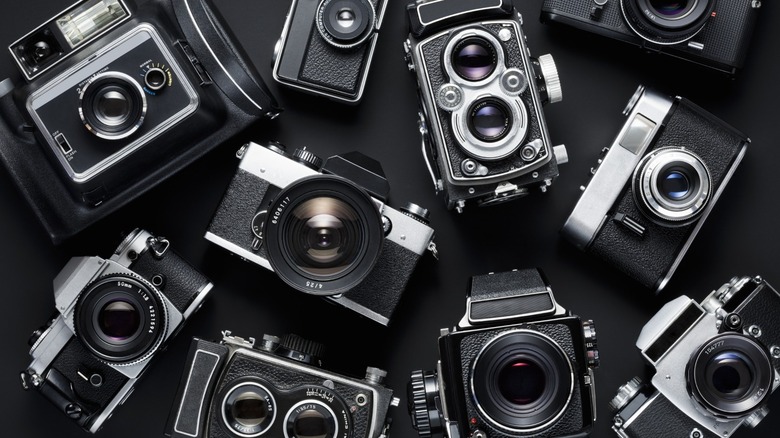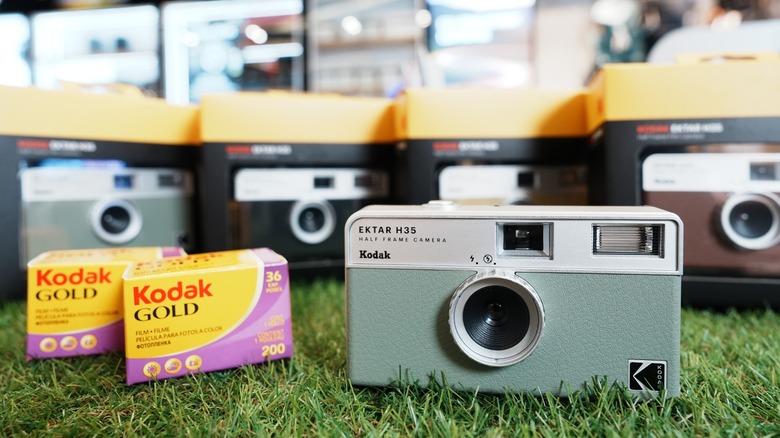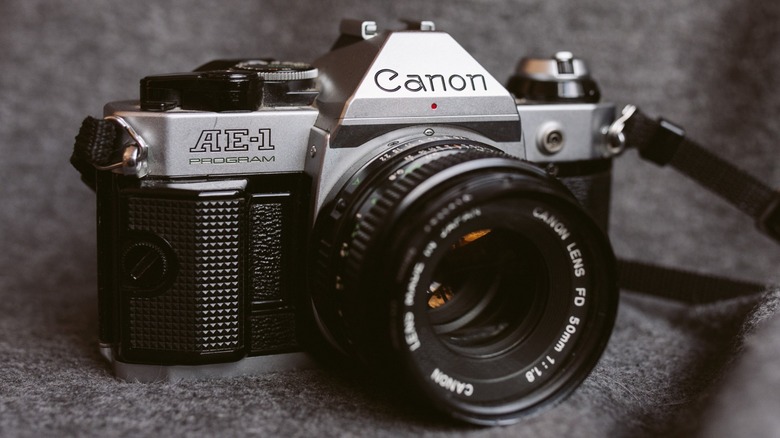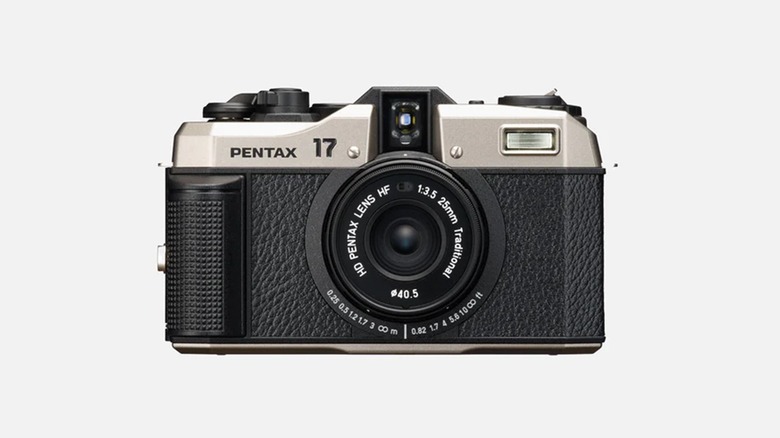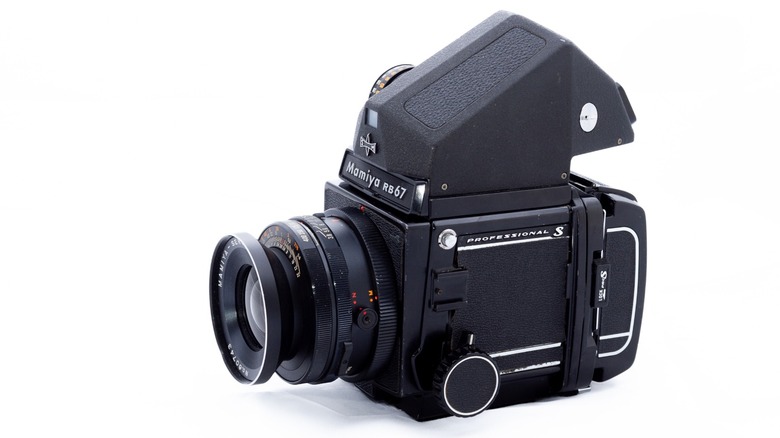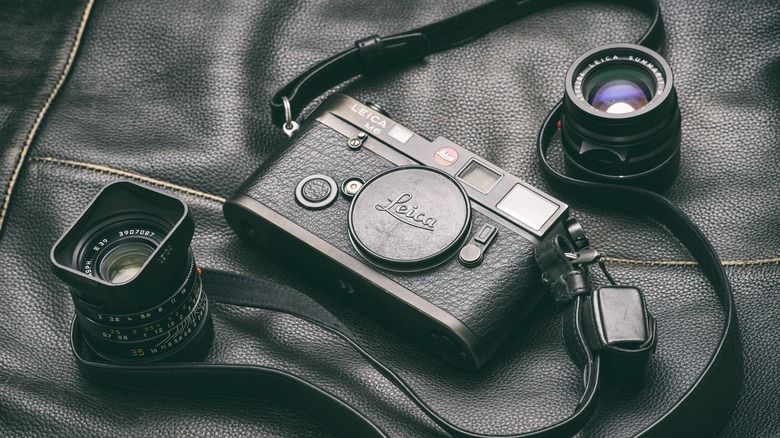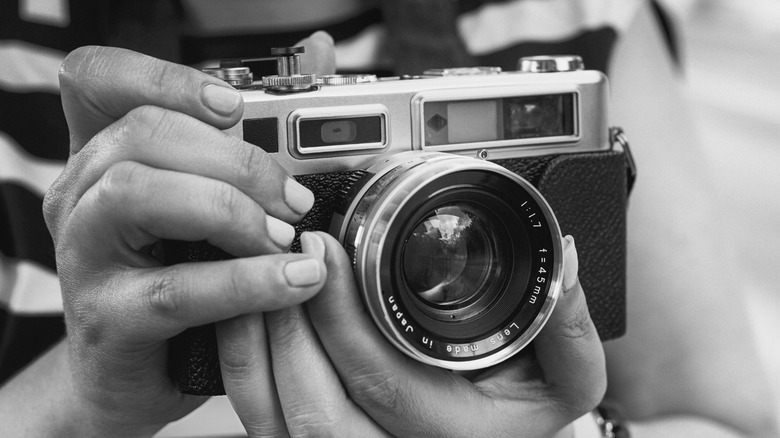5 Of The Best Film Cameras Still Worth Buying (If You Can Find Them)
We may receive a commission on purchases made from links.
Although almost everyone has a digital camera in their pockets all the time, many photography enthusiasts are turning to film cameras to get into the art. Some of the reasons why film photography is making a huge comeback include the feel that you get with film and the fact that you get the pictures in print, not hidden in your phone camera's storage.
Because of this, many people who want to get into film photography are looking for the best film camera they can get. There is one major downside if you're trying to buy a film camera, though — new models are sometimes next to impossible to find, especially if you're looking for a particular one. Furthermore, there are many old film camera models to choose from out there, so you might have some difficulty picking the right used camera for you.
So, we're listing the best film cameras that are still worth buying today. Since there's really only one or two new options today, we're also including used cameras that have been around for decades. We're also picking models across different price points, so whether you can only spare a few dollars to try to break into photography or if you want to get nothing but the best gear for your art, we have an option for you. I will give these recommendations based on my nearly 20 years of experience using and owning some of these cameras and based on feedback from my colleagues in the photography industry.
Kodal EKTAR H35
If you're on a budget and want to shoot film photographs without having to deal with interchangeable lenses and manual controls, the Kodak EKTAR H35 is a good bet. In fact, this camera is the first in our list of best point-and-shoot film cameras and is available brand new on Amazon for between $40 and $65.
However, you should note that this is a half-frame camera, meaning it only shoots half the size of the typical 35mm film. Although this means that you get more images from a single roll of film (the usual 36 images on a single roll of film will become 72 photos), you also get a smaller photo with less resolution. This won't be an issue, though, if you mostly put your photos in an album and don't blow them up to billboard size.
This small point-and-shoot film camera is made from cheap plastics and has a 22mm lens with a fixed focus. Nevertheless, this camera's stylish design (available in five colors), compact size, and simple operation make it the perfect street photography and snapshot camera. It's also fully mechanical, so you don't need a battery to take pictures. But if you want to use the built-in flash, you need to put in a single AAA battery.
Canon AE-1 Program
I started with film photography almost 20 years ago on the Canon AE-1 Program, and despite its age at that time, the camera still performed absolutely well at that time. The Canon AE-1 Program is a more consumer-friendly version of the Canon A-1, one of the best Canon film cameras for beginners. It was one of the most popular film SLRs to come out, and its popularity was helped by the program mode available on the camera. The mode allowed the camera to read the light in the room and set the aperture and shutter speed automatically, making it a beginner-friendly design.
Because of its popularity, almost six million units of the Canon AE-1 Program were made and sold globally, making it relatively easy to acquire. Furthermore, the camera used the Canon FD lens mount, which was also a widely used system from 1972 to 1992. This means you won't have difficulty looking for a lens to pair with the AE-1 Program.
This camera doesn't have a built-in motor drive nor a focusing motor, though, so focusing your shot and winding your film must all be done manually. Nevertheless, that would likely not be an issue, as that's often one of the reasons why one goes into film photography. Since the Canon AE-1 Program was last produced in the 1980s, you won't find a brand-new sample of this camera. Nevertheless, good refurbished examples on Amazon typically go for around $250.
Pentax 17
The Pentax 17 is the latest brand-new film camera to be released to the public, having just arrived on the market in June 2024. Like the Kodak EKTAR H35, this is a half-frame point-and-shoot film camera, so you get 72 images from a single roll of 36-shot film. This film camera costs around $500 on B&H Photo, which is kind of steep compared to the Kodak camera.
Since this is still a point-and-shoot camera, you won't get features like shutter speed and aperture control on it. Nevertheless, it comes with more manual controls versus the EKTAR H35. For example, the Pentax 17 has Bulb Mode, allowing you to shoot images for as long as you can keep the shutter button pressed. It also uses a zone focus system, meaning you can change the focus point on the camera and not just rely on a fixed point and a small aperture, as you can find with the Kodak point-and-shoot. And if you like a soft, out-of-focus background on your subject, you can choose Bokeh mode, and the camera will select the largest possible aperture when you're shooting and just compensate with the shutter speed.
However, the Pentax 17 does have its limitations. It doesn't have a zoom lens, and you cannot change its lens either. Its shutter speeds are limited from 1/350 seconds to 4 seconds, which might not be enough if you're shooting under bright sunlight and you have an ISO 400 film. And since the Pentax 17 is not an SLR, you'll have parallax error when you're shooting up close subjects, so you should consider that if you plan to do macro and portrait photography.
Mamiya RB67
If you want to go with something more robust and professional, you should try a medium-format film camera like the Mamiya RB67. Medium-format film is better than the more popular 35mm film, especially if you want a larger negative that offers higher quality than the traditional 35mm film camera.
Aside from the larger film negatives used on the RB67, it's also modular, so you can add the accessories you need, like grips, hoods, focusing screens, and more (if you can find them). While the RB67 isn't something I'd recommend that you take with you when moving around, it'll be a great candidate if you're building a home photography studio. You just have to be prepared to spend, as a Mamiya RB67 body could cost between $800 to $1,000 on Amazon. This doesn't include lenses, which are priced between $100 to $650.
One advantage of the Mamiya RB67 is that you can convert it into a digital camera if you want to go professional. Mamiya's parent company, Phase One, makes digital backs (which replace the film with a digital sensor) for new medium-format cameras, too. If you know where to find them, you can get an adapter to turn your RB67 into a digital camera. However, the adapter and the digital will definitely be expensive. Nevertheless, if you're just starting out, this would likely be at the back of your mind since you're primarily looking for a film camera.
Leica M6
If you want the best of the best with the pedigree to boot, and you have an unlimited budget, then I would recommend the Leica M6. However, this camera is particularly expensive, coming in at $5,995 for just the camera body only on the official Leica store. If you want a complete set, you can get one with a 50mm f/2 lens for around $8,600 on Amazon.
What makes the Leica so expensive is that each camera model is hand-built in the Leica factory by expert craftspeople, not made by faceless machines on some industrial mass production line. It also only uses the finest materials, so aside from creating art, a Leica camera is a piece of artwork itself.
Because of its level of quality, with Leica cameras being equated to the Roll-Royce of the camera world, the Leica M6 is one of the best film cameras that money can buy. It's also a rangefinder camera, so it has a unique, highly accurate focusing mechanism, ensuring that your images are always on your subject when you're taking a photo.
Why I chose these cameras
These are the best film cameras you can buy today if you want to get into film photography, and I recommended them based on my experience, professional feedback, and what you might actually need. You can purchase the Kodak, Pentax, and Leica cameras brand new; that's why they made the list. The Kodak and Pentax options are also great if you're looking for compact film cameras and don't necessarily want manual controls.
On the other hand, I picked the Canon AE-1 Program specifically because of my experience owning this camera. I also once worked with a Mamiya camera as a photographer's assistant in a studio and saw how the visiting photographer loved it for its high quality. Finally, the Leica has always been my dream camera because of its artisanal build quality and reputation.
Nevertheless, you shouldn't limit yourself to these five cameras if you cannot find them. As I always tell my friends, the best camera you can use is the one you have in your hands. So, if you have a limited budget and you see a film camera available nearby that fits your needs, you should grab it — just make sure that you're getting a good deal, so it's best to bring someone along with you who knows about cameras before buying one.
